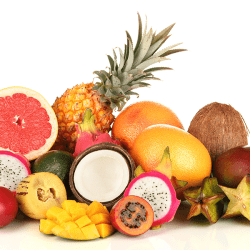Cultivated meat, also known as lab-grown or cultured meat, is an innovative food product made from animal cells. Unlike conventional meat production, which involves raising and slaughtering animals, cultivated meat is produced by growing cells in a lab. The process begins with extracting cells from a live animal or an embryo, placing them in a controlled, nutrient-rich environment where they can multiply and develop into muscle fibers. These muscle fibers are the primary component of meat, meaning the end product looks, tastes, and feels like traditional meat but was never part of an animal’s body.
Cultivated meat offers a way to produce real meat without the need for animal farming, addressing environmental, ethical, and food security concerns in the process.
How is Cultivated Meat Made?
The process of producing cultivated meat varies slightly between companies, but the core steps are generally similar.
- Cell Extraction
Cells are taken from a live animal through a small biopsy or from an embryo. At Believer Meats, for example, fibroblast cells are used because they are stable and replicate quickly. Some companies may use stem cells or muscle cells. - Cell Replication
Once the cells are collected, they are placed in a nutrient-rich medium that provides everything they need to grow and multiply. These nutrients include vitamins, amino acids, and proteins that allow the cells to replicate rapidly in a lab environment. The cells are typically grown in petri dishes initially before being transferred to larger vessels. - Bioreactors
As the cells multiply, they are transferred to bioreactors — large vessels designed to support cell growth at a much larger scale. Inside the bioreactors, the cells continue to develop into a dense biomass, which is the main ingredient in cultivated meat. - Spontaneous Immortalization (Non-GMO Process)
One of the key challenges in growing cells is keeping them replicating. While some companies use genetic modification to make cells reproduce indefinitely, Believer Meats has developed a non-GMO process called “spontaneous immortalization,” which allows cells to keep growing naturally without the need for genetic alterations. - Harvesting and Final Product
Once the biomass reaches the desired density, it is harvested from the bioreactor. The next step involves separating the cells from the growth medium, combining the cell biomass with plant-based ingredients, and shaping it into products that resemble conventional meat in taste, texture, and appearance. The final product is a combination of real animal cells and plant-based materials, offering the sensory experience of traditional meat.
Is Cultivated Meat Actually Meat?
Yes, cultivated meat is real meat. Though it’s produced in a lab, the molecular and chemical makeup of cultivated meat mirrors that of conventionally grown meat. The cells that form cultivated meat come directly from animals and have the same genetic and structural properties. Under a microscope, there is no discernible difference between cultivated meat and traditional meat.
Cultivated meat also retains many of the same nutritional benefits as conventionally-grown meat, including protein content, vitamins, and minerals. Consumers can feel confident that they are eating real meat, just produced in a more sustainable and ethical way.
How is Cultivated Meat Different from Plant-Based Meat?
While both cultivated meat and plant-based meat aim to provide alternatives to conventional animal agriculture, they are fundamentally different in their composition and production methods.
- Plant-Based Meat
Plant-based meat is made entirely from plant-derived ingredients, such as soy, peas, or wheat. It mimics the taste, texture, and appearance of meat but does not contain any animal cells or byproducts. While some plant-based meats may contain similar flavors or nutrients as animal meat, they are ultimately not biologically equivalent. - Cultivated Meat
Cultivated meat, on the other hand, is made from actual animal cells. The process starts with real cells extracted from a living animal and grown in a lab. Unlike plant-based meat, cultivated meat has the same genetic and cellular structure as conventional meat. As a result, the taste, texture, and nutritional profile are virtually identical to traditional meat.
In short, while both products serve as meat alternatives, cultivated meat is biologically equivalent to conventional meat, while plant-based meat is a completely vegan product that attempts to replicate the experience of eating meat.
Believer Meats’ first US cultivated meat factory in North Carolina

What are the Pros and Cons of Cultivated Meat?
Pros of Cultivated Meat
- Animal Welfare: Cultivated meat eliminates the need to raise and slaughter animals, making it a more ethical option for meat production.
- Environmental Sustainability: Lab-grown meat uses far fewer natural resources than traditional animal farming, including less land, water, and energy. It also produces fewer greenhouse gas emissions.
- Reduction in Food Waste: Cultivated meat can be produced more efficiently than conventional meat, potentially leading to less food waste.
- Healthier Product: Because cultivated meat is produced in a controlled environment, it does not require antibiotics or hormones, making it a cleaner and potentially healthier option for consumers.
- Food Security: As cultivated meat production scales, it could help address global food insecurity by providing a more efficient way to produce protein.


Cons of Cultivated Meat
- High Production Costs: Currently, cultivated meat is more expensive to produce than conventional meat. While prices are expected to drop as production methods improve and scale, it is still not cost-competitive with traditional meat.
- Technology and Scalability: Cultivated meat production requires advanced technology, large bioreactors, and significant resources. Scaling up to meet global demand is a challenge that the industry is still working to overcome.
- Texture and Sensory Experience: While cultivated meat replicates the taste of conventional meat, achieving the same texture and mouthfeel is more difficult. Companies often use plant-based ingredients to improve the texture, but this process is still evolving.
- Consumer Acceptance: Many people are unfamiliar with lab-grown meat and may be hesitant to try it. Cultivated meat companies must invest in educating consumers about the benefits and safety of their products to gain widespread acceptance.
What are the Industry Challenges of Cultivated Meat?
Scaling Production
One of the biggest challenges for the cultivated meat industry is scaling up production to meet global demand. The current production process requires sophisticated bioreactors and large amounts of resources, making it difficult to produce cultivated meat at the scale required to replace or supplement conventional meat production. Overcoming these technical and logistical hurdles is crucial for the industry’s future growth.
Replicating Texture and Structure
Cultivated meat cells lack the natural structure found in animal muscle tissue, which makes it difficult to recreate the exact texture of traditional meat. To address this, companies are experimenting with plant-based materials to improve the structure and texture of their products. However, perfecting the sensory experience remains a key challenge.
Public Perception and Awareness
Cultivated meat is a relatively new technology, and many consumers are wary of trying something produced in a lab. Building public awareness and trust is essential for widespread adoption. Companies must focus on transparent communication and educate consumers about the benefits of cultivated meat.
Conclusion
Cultivated meat represents a groundbreaking innovation in food production, offering a sustainable, ethical, and potentially healthier alternative to traditional meat. While there are challenges to overcome, such as high production costs and scaling, the potential benefits for the environment, animal welfare, and global food security make it a promising solution for the future of food.

















